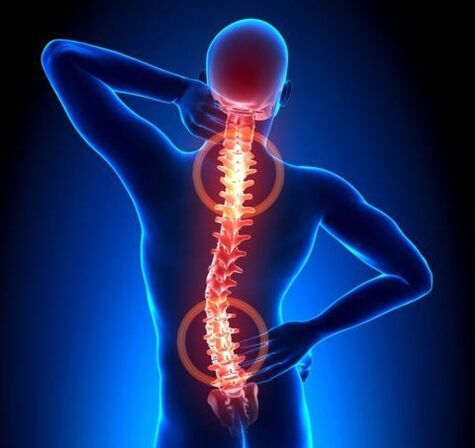
Many people aged 30-35 complain about back pain.The cause of these pains may be a disease of the spine.Osteochondrosis is a disease that occurs in middle-aged people, but it is often found in patients 40 years later.
Osteochondrosis - What is this disease and what are its dangers?
This term refers to the malnutrition process of cartilage and subject's bone tissue.In modern medical practice, osteochondrosis is known as a degenerative disease of the spine and intervertebral discs, which can play the role of shock absorbers.The danger of the disease is that the affected discs are almost impossible to recover, and disability is possible without proper treatment.
Is osteochondrosis a common disease?Statistics are not satisfied.About 85% of the world's population suffer from this disease.
This disease is the most common form of all diseases that affect the spine.And according to prevalence, it is immediately after cardiovascular disease.
The nature of disease
So, osteocartilage - What is it?This is a chronic disease that affects the joints, most commonly the spine.
The spine is composed of 24 vertebrae.Between the two vertebrae is a disk whose purpose is to soften and depreciate the load.
Under normal circumstances, the disk is very elastic and can withstand heavy loads.In the center of the disk, there is a pulp core with a lot of water.For some reason, the core loses its hydrophilicity.
As a result, disk delay, height reduction and deformation.In the later stages, as growth forms - bone tissue growth - bone plants compress the peripheral nerves and spinal cord.This is osteochondral disease of the spine.
Causes of pathology
Although osteochondrosis is a fairly common disease, the causes of pathological development have not been fully determined.
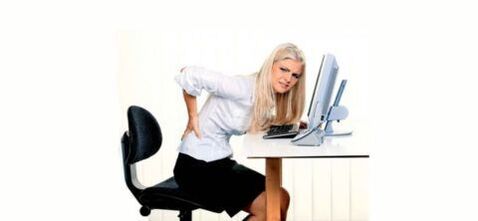
Main factors were considered:
- Too much load on the spine;
- Injuried;
- Professional harmful - weightlifting or long work, uncomfortable, motionless posture;
- Too much weight;
- Genetics
- Violate posture.
In almost all older people, osteochondrosis develops to one degree or another, and is one of the processes of body aging.
Phases, forms and symptoms of disease development
Experts distinguished the 4 stages of the disease:
- Phase 1- Move the disk core to the edge;
- Stage 2- Crack occurrence in cartilage wheels and instability in vertebral cross-sections;
- Stage 3- Complete rupture of the disk, loss of nucleus in the spinal stem, and the root of the spinal cord is possible;
- Stage 4- The sketch changes not only on the disc, but also in the surrounding fabric.
The main symptom of the disease is pain.It can be sharp in high intensity or silly medium manifestations.
In addition to pain, there are:
- Pain and tension in the back muscles;
- Numbness in the skin on the arms and legs;
- limits on exercise volume;
- weakness of the limb muscles;
- Sparse arms and legs;
- Suddenly dizzy.
These are general manifestations of all pathological forms.According to the locally changing spine, three forms of disease with characteristic symptoms are distinguished.
Table number 1.The forms of osteochondrosis and their inherent symptoms:
| The form of disease | symptom |
| Osteochondral disease on the neck | Changes in this sector have led to damage to the blood vessels and microcirculation.Therefore, a person is constantly dizzy.Sometimes, this can cause fainting.There is noise in the ears and colorful spots in front of the eyes. |
| Osteochondral disease of the thoracic vertebrae | Using this form of the disease, acute chest pain was observed.The disease can lead to progression of intercostal neuralgia and exacerbate the progression of heart disease. |
| Lumbar vertebrae disease | The pathology of the lower back is manifested as pain in the buttocks and the pitch of the IKR is reduced.The complication may be radiation stones, which are spread throughout the leg with pain. |
Due to the pathology of the vertebral disc, a large number of diseases occur in the body: nerve pinching, swelling, circulatory violations and fibrosis of surrounding tissues.These changes can lead to multiple symptoms, which complicates the diagnosis and prescribes appropriate treatment without careful examination.
Clinical manifestations
The symptoms of the disease depend on the main location of the lesion.In the following sections, we consider the characteristics of each disease.
Cervical

The main symptoms of cervical spine damage include:
- Discomfort, soreness in the neck and shoulders;
- Muscle tone;
- Increase sweating;
- Numb fingers;
- Violation of movement coordination;
- Headache, dizziness;
- hearing and vision problems;
- hypertension.
As the disease progresses and damages to nearby arteries and nerves, one of the following syndromes can develop:
- vertebral artery;
- heart
- hypertension;
- root;
- Cervical migraine.
Violations of blood circulation in vertebral arteries and brain tissues are dangerous consequences of osteochondrosis.
The syndrome manifests:
- Systemic/periodic dizziness;
- Vision is weak;
- partial or complete hearing loss;
- Sometimes - coma.
Important!The neurological manifestations of spinal osteochondrosis usually have to be distinguished from cerebral atherosclerosis, DEP, and other pathology.
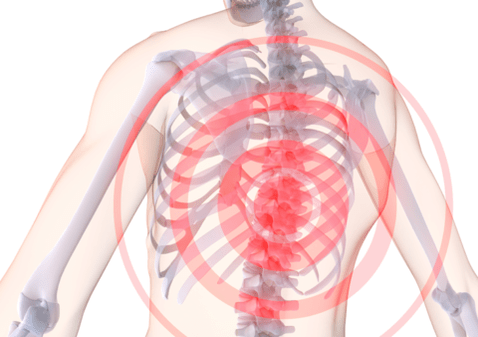
Chest area
Compared with other forms of disease, sternosal osteochondrosis is less obvious.
Its symptoms include:
- Chest pain, increased at night or in one position for a long time;
- Discomfort, the feeling of squeezing between the shoulder blades;
- Strengthen pain during deep breathing.
If the disease is not treated, it will progress, thereby damaging nearby nerves.
This localization of the development of complications of spinal osteochondrosis may be:
- Numbness of the skin in certain areas, a crawling “chicken skin” feeling;
- Itchy skin, burning;
- Limb cooling;
- Nail fragility;
- Significant dry skin;
- Pain along the esophagus and pharynx;
- Gastrointestinal diseases.
In addition, the chest positioning of the disease has two specific symptoms - Dorsago and Bordorgia.
Dorsago is sudden, sharp, very nervous chest pain, "chest metastasis".It can happen for a long time with monotonous work in the same location.
Notice!During breastfeeding, the pain is so severe that the patient is reluctant to even inhale.
Back pain is not that strong, but the monotonous pain can last up to 2-3 weeks.Their tendency increases through deep breathing.
Waist department
Osteochondrosis in the lower part of the spine, i.e. the lumbar spine, occupies a leading position in prevalence.

Among his characteristic symptoms:
- Dull, more common lower back pain, and legs radiation;
- Discomfort, which can aggravate when changing the position of the body, sneezing, coughing, trying to lift weights;
- Constant muscle spasms in the lower back;
- Lights on the lower back;
- Impaired sensitivity to the skin of the hips, hips, legs, feet;
- The feeling of a chicken skin tem worm crawling with lower limbs;
- Dry, peeling the skin.
Sacra
Osteochondrosis in the bone and spine is extremely rare in isolated ways, usually a "continuation" of lower waist injuries.
This explains the characteristics of his symptoms:
- Lower back pain and sealing nerves;
- "Sanctuary" with sharp legs;
- Discomfort at the back of the thigh;
- Numbness in the lower limbs;
- Reduce instability symptoms of impaired exercise activities.
Important!Osteochondrosis in the lower spine can lead to extremely dangerous complications such as impaired blood supply to the spinal cord and compressive myelopathy.
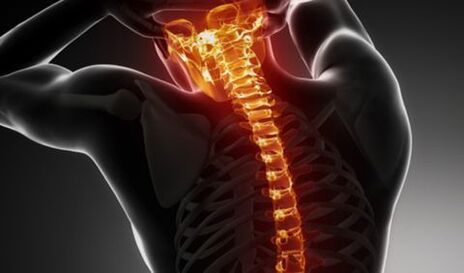
Common osteochondral diseases
Common forms of all parts of the spine or osteocartilage are the most severe version of this pathology.Due to the widespread failure, its pictures can be very diverse and include almost all of the symptoms mentioned above.
Diagnostic method
Any of the above complaints will require an appeal to the medical institution: the patient must check the patient.The diagnosis of osteochondrosis should be complex and very thorough.
Standard directives include the following stages:
- Collect complaints and resolve blood.
- Clinical examination.
- X-ray examination.
- Modern Methods (CT, MRI).
In conversation with the patient, the doctor should find out:
- Trouble the patient;
- What is the most obvious place for unpleasant feelings?
- What are their strength and duration?
- This aroused their reinforcement;
- This helps deal with pain.
Important!Be sure to tell your doctor how long you have been worried about such complaints and whether you have received any treatment earlier.
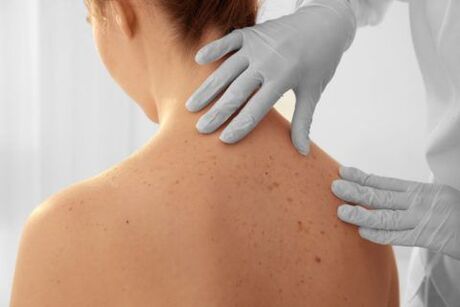
During clinical examination, experts evaluate:
- The patient's body position, gait, number of active and passive movements;
- Skin defects, redness, and peeling;
- symmetry of physical health and pathological;
- The presence of muscle spasms;
- area exposed to pain;
- Pain, temperature and other types of sensitivity are present.
During the radiographic process, each spine was studied individually for better visualization of the spine.The picture is performed in both tilt predictions directly, horizontally and (according to instructions).To assess the stage and severity of the change in degenerative disease, an X-ray classification of Zeaker spinal osteochondrosis was used.
Table: X-Ray Stages of Spinal Osteochondrosis:
| stage | describe |
| Me (+) | Unrepresented changes in spineworms in a few segments |
| II (++) |
|
| iii(+++) | Changes in expression, significant stenosis of intervertebral foramen |
| iv (++++) | Significant stenosis of intervertebral foramen, large-scale exocytosis, often irreversible changes |
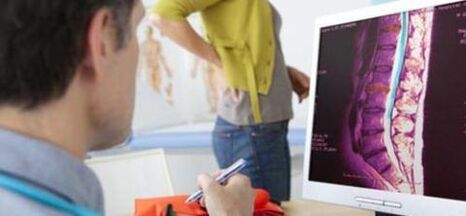
For insufficient information content of R-PICTURE, patients can be prescribed for more modern tests - CT (target image of one or more segments of the spine) and MRI (visual diagnostic method based on the properties of electromagnetic radiation).
treat
First, the doctor explained to the patient what osteochondrosis is and how to treat it.He talked about a series of measures that must be implemented over a long period of time.
Treat the disease considering the stage.In the early stages of the disease, massage, physical therapy, physical therapy exercise.However, as the malnutrition process progresses, various orthopedic equipment that fixes the spine should be used.Drug treatment is also necessary.
Surgical interventions demonstrated the ineffectiveness of complications and conservative treatment.
drug
The most important task of drug treatment is to relieve pain, eliminate inflammation in nerve roots, restore the structure of cartilage, improve blood circulation and nutrition to prevent the development of pathology.In this case, several sets of medications can be prescribed.
In pharmacies, they are represented in various forms and in various forms.The prices of medicines may vary, and you can always choose the most affordable one.
Table 2.Drugs used in conservative treatment of osteochondrosis:
| Pharmacology Group | Treatment effect | Instructions for use |
| Cartilage protector | The process of slowing down cartilage degeneration helps recovery. | Take 1 capsule for one month.If necessary, repeat the treatment process. |
| NSAID | It has an anesthetic effect and reduces the inflammatory process. | It hurts when taking a tablet.Due to severe pain, intramuscular injection of the drug was used. |
| Vitamin B | Improves the conductivity of nerve impulses and restores microcirculation in affected cartilage areas. | The treatment process of intramuscular injection. |
| musorelaxant | Relax muscles, relieve tension, and promote pain. | Take a tablet twice a day. |
Drugs are prescribed according to doctors' testimony.Self-assays can be ineffective and in some cases can even hurt.
Physical therapy for osteochondrosis
In addition to drugs, how can osteochondrosis recover faster?One of the most effective ways to treat this disease is physical therapy.
Its advantage is its selective effect on disease priorities.Physical therapy contributions are to relieve pain, eliminate inflammation and increase general immunity.With their help, muscle relaxation, metabolic processes and blood circulation.
For osteochondrosis, they have been successfully used:
- Magnetic therapy;
- laser therapy;
- Shockwave therapy;
- quartz;
- Electrophoresis;
- The influence of low frequency current.
Physical therapy will not be performed if the patient is in a serious state, disease, tumor disease and mental illness worsen.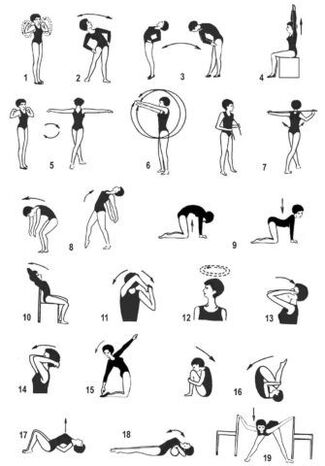 In other cases, physical therapy has a beneficial effect on the recovery process, enhancing the effect of the drug and thus reducing the dose.
In other cases, physical therapy has a beneficial effect on the recovery process, enhancing the effect of the drug and thus reducing the dose.
Medical Sports
Physical education classes are prohibited during acute periods of the disease.After eliminating this period, the doctor prescribed therapeutic exercises, and he developed with each patient with the lecturer.
With the help of exercise, the muscle corset is strengthened, thus preventing the curvature of the spine and allowing you to properly and evenly distribute the load on the vertebrae.With regular physical fatigue, the concentration of the drug is higher than the concentration it lacks.
It is necessary to participate in the guidance of experienced lecturers and carefully monitor their condition.Stop exercise due to discomfort and severe pain.
prevention
It is useful to know what osteochondrosis is and its consequences, and it is considered prevention.
Preventive measures are very simple, and they are easy to do for everyone who cares about their health.
- Prevent injury;
- Regular physical exercise (swimming is very useful);
- Maintain normal weight;
- Do not load the spine;
- Monitoring the correctness of posture;
- Don't hold a position for a long time;
- Avoid sudden exercise when lifting weights.
When these rules are implemented, the mitigation period will be long.
Osteochondrosis is a very serious disease.However, with timely seeking a doctor and proper treatment, its destructive effects can be stopped.
Ask a question to the doctor
Neck pain
Hello, please let me know.I am 24 years old this year.Over the past few months, there has been pain in the neck, the back of the head (sometimes still give whiskey, eyes).I also noticed the hands, tongue and the neck of the sky, tingling and numbing tightness.
I suspect osteochondrosis because both mothers and grandmothers from young people have similar symptoms torture.Where to start the exam?There is another question: Can I go for cardio?
Make an R-Scheme (CT) store and doppler on the head and neck of the boat.You may have developed vertebral artery syndrome in the context of cervical bone cartilage.Further plans for diagnosis and treatment can only be developed after the results of these tests are obtained.
It is best not to visit aerobic exercise.
Lumbar vertebrae disease
For seven years, I have been suffering from lower back and the intensification of osteochondrosis is almost every 2-3 months.Injections and tablets help in a short period of time, and then the pain recovers.I worked as a postman and it became even more difficult.Am I disabled?
Hello!ITU is a decision on the decision of the Disability Group based on a comprehensive study of your situation.First, you need to contact the therapist and have a checkup.
Typically, in the lumbar vertebrae, no disability group was shown.As complications develop (protrusions, vertebral hernia, etc.), its reward is possible.But, I say it again, everything here is individual.

























